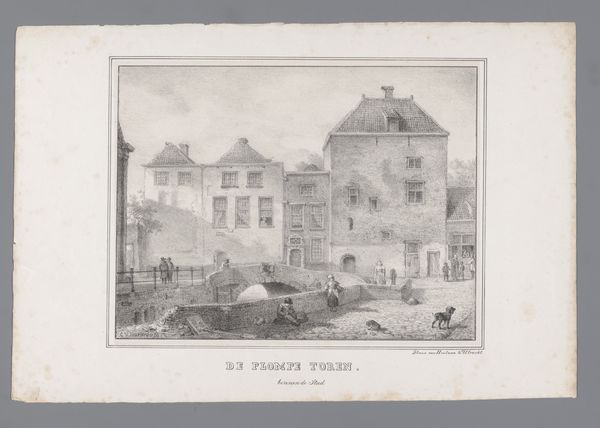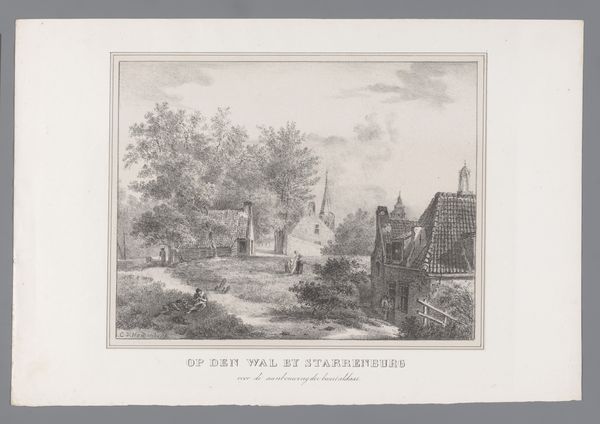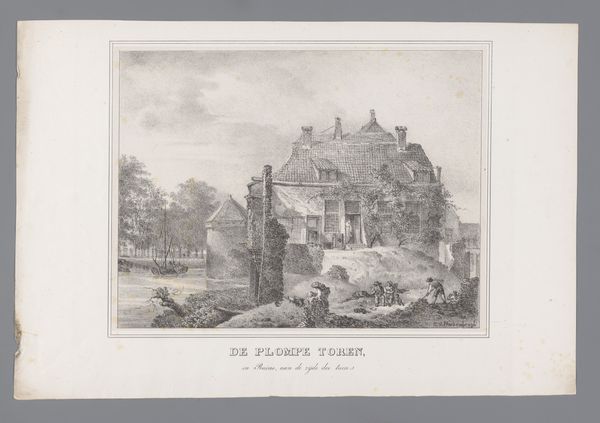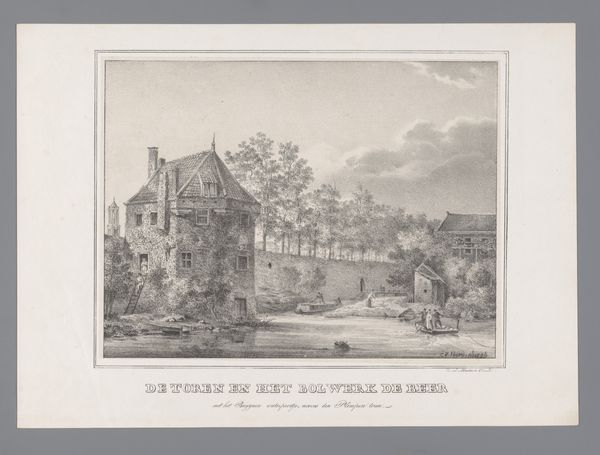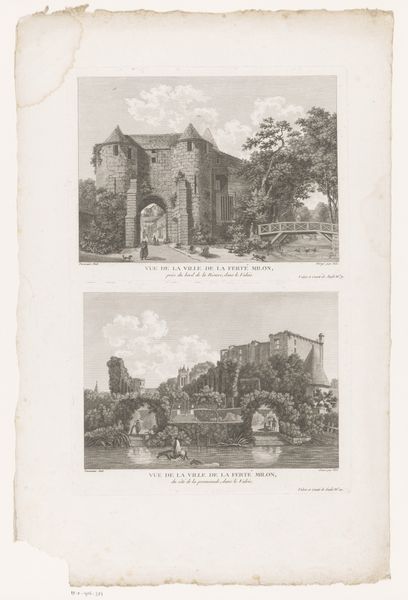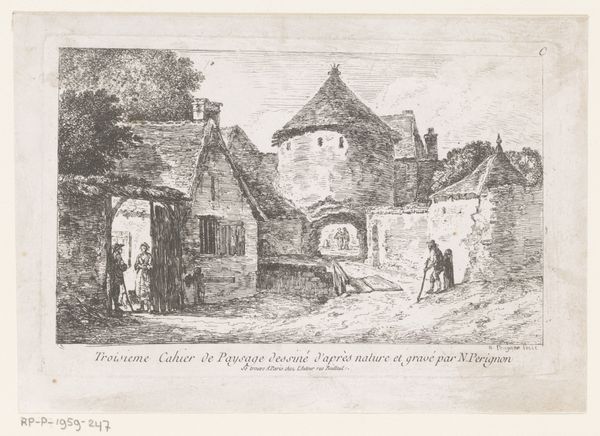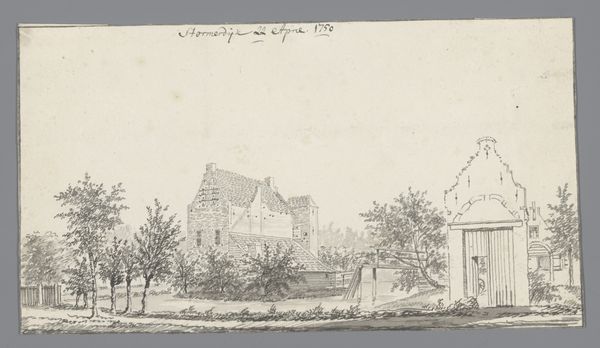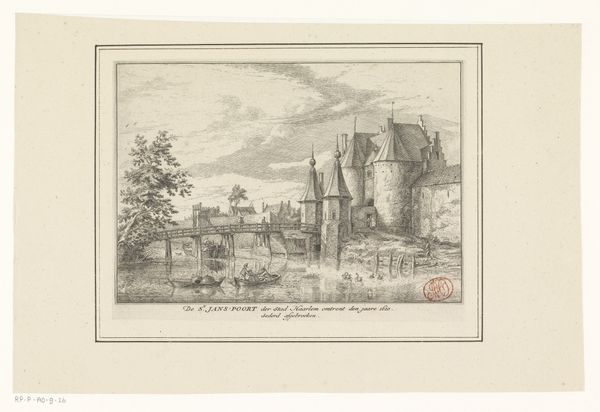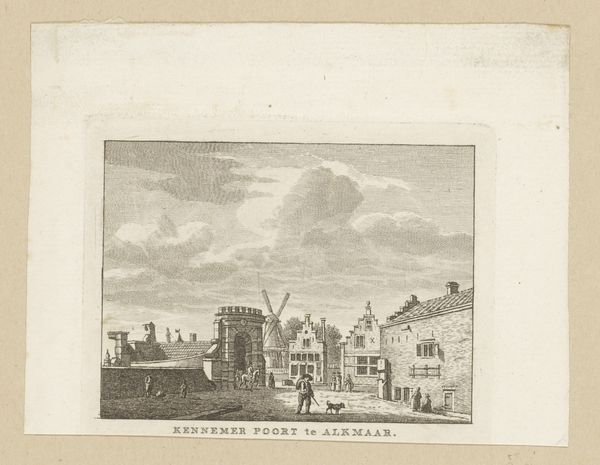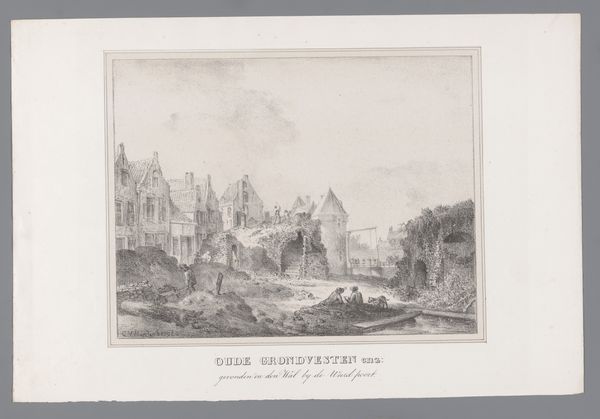
Plompetoren in Utrecht vanaf de buitenzijde gezien 1809 - 1843
0:00
0:00
drawing, paper, ink
#
drawing
#
landscape
#
paper
#
ink
#
romanticism
#
cityscape
#
realism
Dimensions: height 280 mm, width 415 mm
Copyright: Rijks Museum: Open Domain
Curator: This drawing, "Plompetoren in Utrecht vanaf de buitenzijde gezien," captures the Plompetoren tower in Utrecht from an exterior perspective. Cornelis van Hardenbergh rendered it sometime between 1809 and 1843 using ink on paper. It's currently held in the Rijksmuseum collection. Editor: There's a definite stillness to this piece. The tower itself is solid, stoic, but the water gives the drawing a sense of reflected quiet. Almost melancholic. Curator: The artist was working within the Romantic and Realist styles simultaneously, typical for that period, but I think the melancholy you pick up on is part of that Romantic impulse, the glorification of the past and the inevitable decay of historical structures. These kinds of monuments, what they represent, that sense of place... those things were a potent area of study during that time. Editor: Absolutely. There's an undeniable cultural weight to towers, reaching towards something intangible... something eternal perhaps. But this is such a grounded portrayal. What stories did this tower hold, what social structures did it represent at the time of its creation? Curator: Well, the Plompetoren was once part of Utrecht's defensive walls, a powerful symbol of civic authority and protection. Its transformation over time reflects the changing power dynamics of the city, how military importance ceded to civic identity. Its later existence as a mere viewpoint speaks volumes, I think, about evolving notions of urban space and historical preservation. Editor: I see how Van Hardenbergh is presenting a structure with that kind of history in mind. It gives that quiet mood context and complexity. It’s not just an old building. It is a commentary about society. Curator: Precisely! And remember that museums began playing an important public role around the period this was created. Art starts performing a public educational function by documenting these sorts of things. In capturing it this way, van Hardenbergh ensures the tower lives on. Editor: It certainly has given me something to consider – not just the architecture itself, but what it stood for, what the image reminds us of today. Curator: A lasting imprint through ink, wouldn’t you agree?
Comments
No comments
Be the first to comment and join the conversation on the ultimate creative platform.
